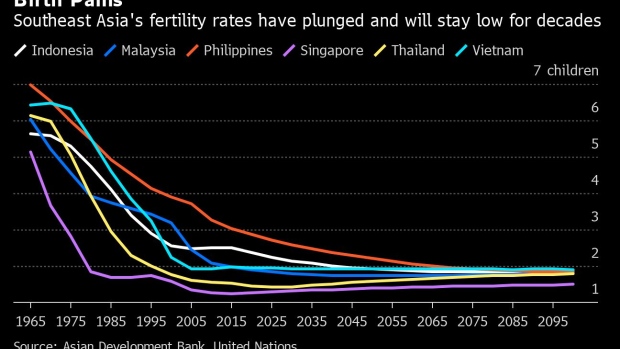Apr 2, 2021
Charting Global Economy: U.S. Employment, Manufacturing Power Up
, Bloomberg News

(Bloomberg) -- Job growth and manufacturing in the U.S. powered ahead at end of the first quarter as a robust pace of coronavirus vaccinations, fewer restrictions on business and fiscal support generate a stronger tailwind for the economy.
Sweden, Norway and Russia are among countries on pace to return to pre-pandemic levels of growth by year-end, while Covid-19 infections continue to haunt emerging economies such as Brazil.
The pandemic may have expedited China’s bid to overcome the U.S. as the world’s largest economy later this decade.
Here are some of the charts that appeared on Bloomberg this week on the latest developments in the global economy:
U.S.
Employers added the most jobs in seven months with improvement across most industries in March, as more vaccinations and fewer business restrictions supercharged the labor market recovery in the world’s largest economy.
Manufacturing expanded in March at the fastest pace since 1983, catapulted by the firmest orders and production readings in 17 years, adding to evidence of an economy poised to accelerate.
The average time it takes for production materials to reach U.S. factory floors is now the longest on record, the ISM report showed. The purchasing managers group said lead times stretched to 75 days in March from 67 days a month earlier. Shortages of basic materials, higher input prices and difficulties in transporting products are creating headaches for an otherwise robust factory sector.
Europe
Russia’s economy continued to rebound from its pandemic-induced recession in the fourth quarter of 2020, easing its contraction as President Vladimir Putin opted against imposing a second national lockdown.
By the end of 2021, Bloomberg Economics forecast output will exceed its pre-pandemic level in Sweden and Norway. That’s set to bring interest rate increases into view.
Home working is likely to remain after the pandemic finishes, according to a survey of 2,000 companies the U.K., most of which are planning to allow employees greater flexibility on where and when they do their jobs.
Asia
Since the 1970s, China has been racing to become the world’s largest economy. Its recovery from the pandemic means it could eclipse the U.S. this decade.
Returning to a high growth path will be the easy part for South Asian economies led by India, which confront much harder challenges in the form of increased inequalities and reduced access to education in the wake of the pandemic, according to the World Bank.
Emerging Markets
Brazil’s unemployment rate rose as another, more contagious wave of the coronavirus began spreading across the nation.
Countries across Asia are trying everything from fertility tours to baby bonuses to spur population growth in an aging world. Not so in Indonesia, where officials are trying to convince people to have fewer children.
World
Bloomberg Economics’ nowcasts of GDP growth across major economies show output for a significant chunk of the world economy poised to move above the pre-crisis peak, but with a widening divide as China and the U.S accelerate out of the slump, and European countries sink lower.
The International Monetary Fund is preparing to give its member countries the biggest resource injection in its history, $650 billion, to boost global liquidity and help emerging and low-income nations deal with mounting debt and Covid-19.
©2021 Bloomberg L.P.